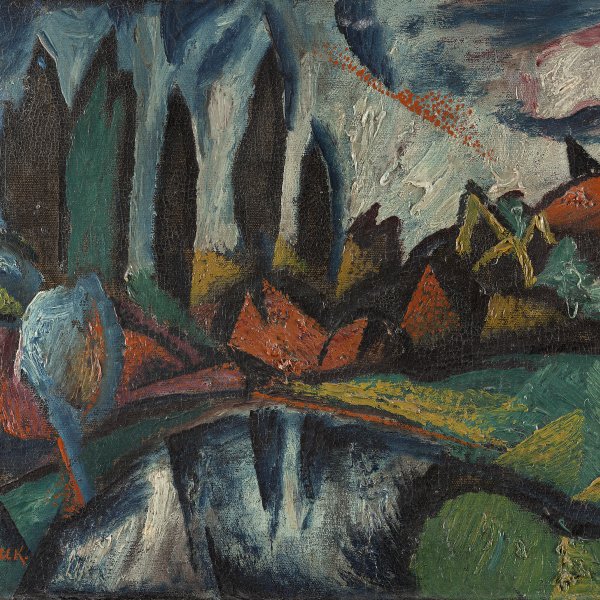David Burliuk
Hailed as the father of Futurism in the Russian empire, the Ukrainian painter David Burliuk was the first born of a family of artists. After beginning his training in Kazan and Odesa, he moved to Munich with his brother Volodymyr. There they studied at the Königliche Bayerische Akademie under Anton Ažbe, and furthered their training in Paris under Fernand Cormon. Later, back in his country of birth, Burliuk again took lessons in Odesa in 1910 and in 1911 enrolled at the Moscow School of Painting, from which he was expelled in 1914.
On returning to his country, Burliuk became a spearhead for the new art trends that were beginning to emerge and a promoter of change in the outmoded local cultural institutions. During these years, in which his painting fluctuated between Post-Impressionism and Expressionism, he was invited by his friend Wassily Kandinsky to take part in the exhibition and the almanac of Der Blaue Reiter (The Blue Rider), in which he published ‘The Savages’ of Russia’, one of his most influential essays. In 1912 he and Vladimir Mayakovsky also signed the manifesto entitled ‘A Slap in the Face of Public Taste’, which became a key document for Futurism in imperial Russia. His work and his controversial, active role as an organiser of Futurist events made a vital contribution to this movement in his country.
Following the 1917 Revolution, Burliuk emigrated to Siberia before settling in Japan and later, in 1922, he moved to New York, where he spent the rest of his life. In the United States David Burliuk continued to paint and write, and he and his wife founded the publication Color and Rhyme in 1930.





